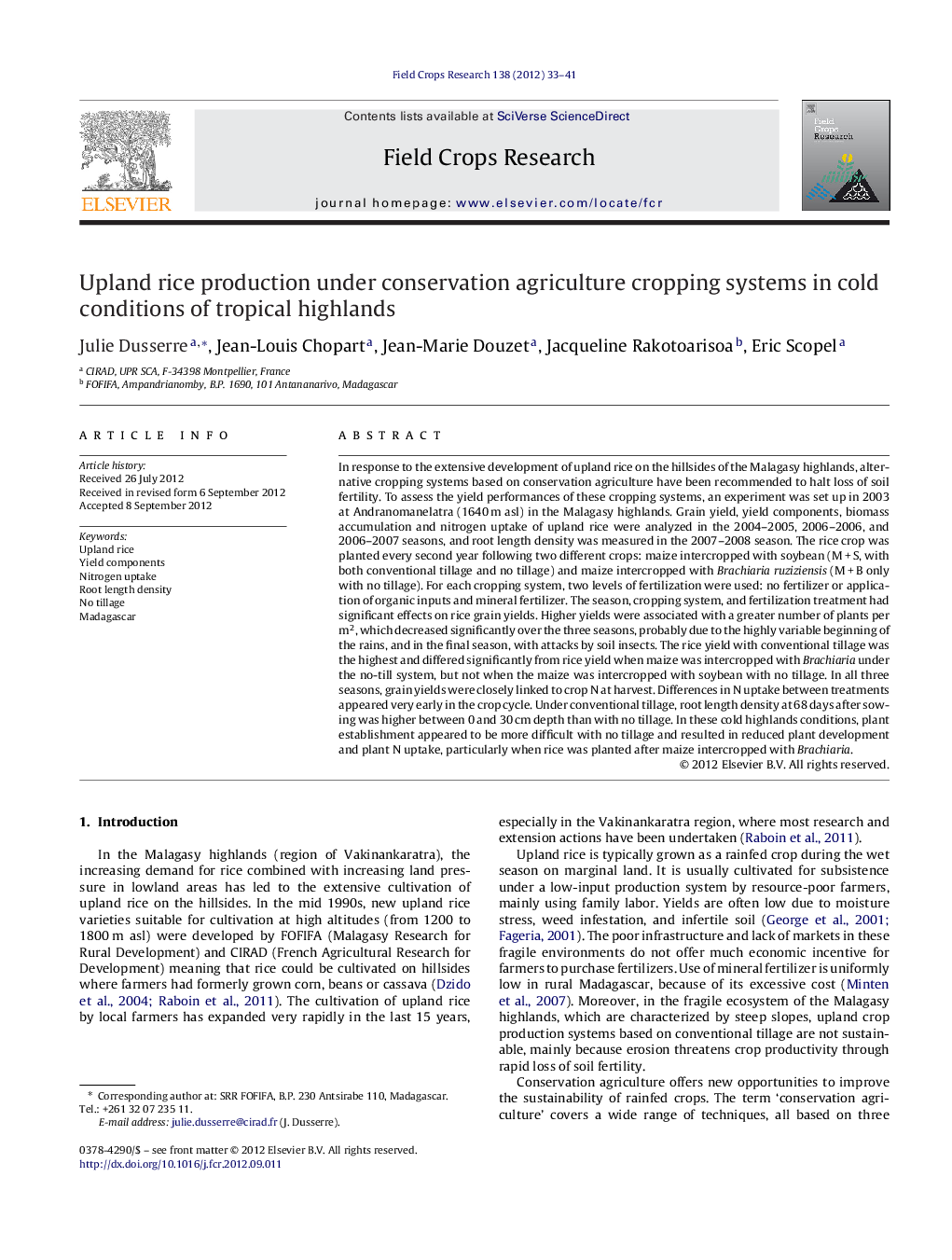| کد مقاله | کد نشریه | سال انتشار | مقاله انگلیسی | نسخه تمام متن |
|---|---|---|---|---|
| 4510495 | 1624725 | 2012 | 9 صفحه PDF | دانلود رایگان |

In response to the extensive development of upland rice on the hillsides of the Malagasy highlands, alternative cropping systems based on conservation agriculture have been recommended to halt loss of soil fertility. To assess the yield performances of these cropping systems, an experiment was set up in 2003 at Andranomanelatra (1640 m asl) in the Malagasy highlands. Grain yield, yield components, biomass accumulation and nitrogen uptake of upland rice were analyzed in the 2004–2005, 2006–2006, and 2006–2007 seasons, and root length density was measured in the 2007–2008 season. The rice crop was planted every second year following two different crops: maize intercropped with soybean (M + S, with both conventional tillage and no tillage) and maize intercropped with Brachiaria ruziziensis (M + B only with no tillage). For each cropping system, two levels of fertilization were used: no fertilizer or application of organic inputs and mineral fertilizer. The season, cropping system, and fertilization treatment had significant effects on rice grain yields. Higher yields were associated with a greater number of plants per m2, which decreased significantly over the three seasons, probably due to the highly variable beginning of the rains, and in the final season, with attacks by soil insects. The rice yield with conventional tillage was the highest and differed significantly from rice yield when maize was intercropped with Brachiaria under the no-till system, but not when the maize was intercropped with soybean with no tillage. In all three seasons, grain yields were closely linked to crop N at harvest. Differences in N uptake between treatments appeared very early in the crop cycle. Under conventional tillage, root length density at 68 days after sowing was higher between 0 and 30 cm depth than with no tillage. In these cold highlands conditions, plant establishment appeared to be more difficult with no tillage and resulted in reduced plant development and plant N uptake, particularly when rice was planted after maize intercropped with Brachiaria.
► The rice yield with conventional tillage was the highest.
► Differences in N uptake between treatments appeared very early in the crop cycle.
► Root length density at 68 days after sowing was higher under conventional tillage between 0 and 30 cm depth.
► Plant establishment appeared to be more difficult with no tillage.
► No tillage resulted in reduced plant growth and plant N uptake.
Journal: Field Crops Research - Volume 138, 25 October 2012, Pages 33–41